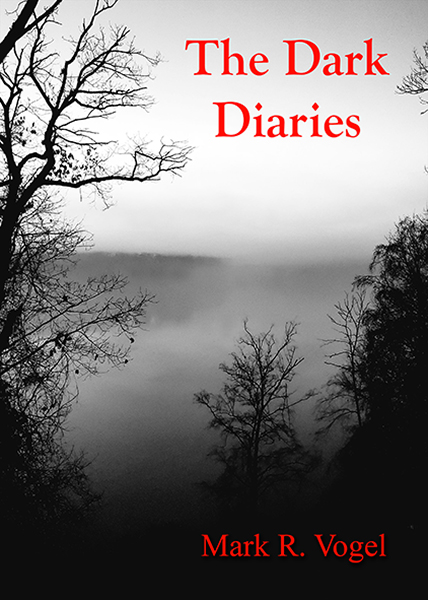Prefatory note: Rumor has it that only half of Leslie Bohem’s (Dante’s Peak) script for A Nightmare on Elm Street: The Dream Child was retained and that William Wisher (The Terminator, The 13th Warrior, Exorcist: The Beginning) and David Schow (The Crow) did rewrites before Michael De Luca (In the Mouth of Madness, Freddy’s Dead) polished the work. With this in mind, considering Bohem, John Skipp, and Craig Spector appear in the credits (the latter two’s efforts were expunged entirely), I was initially hesitant to cite Bohem as the man behind the quill, but after having watched NOES 5’s successor, the screenwriting disaster referred to as Freddy’s Dead, written entirely by Luca, I am now comfortable with issuing Bohem his due credit.
Considering that no more Elm Street children remain, Alice Johnson (Lisa Wilcox, NOES 4) becomes puzzled at how Freddy Kruger (Robert Englund, A Nightmare On Elm Street, Dead & Buried, New Nightmare) is gaining access to her once again. At the mysterious appearance of Amanda Kruger (Beatrice Boepple), Freddy’s mother, Alice attempts to find an answer when she discovers that she is pregnant.
My main contention with the A Nightmare on Elm Street (NOES) series is that a large majority (those not directed by Wes Craven) are poorly thought out. Of course, when exploitation is the impetus for creation, one can’t expect engaging sequels one right after another as we had during the Golden Age of Hollywood, i.e. Universal’s monsters. Aside from one major oversight and a handful of missed opportunities, Bohen does an admirable job in giving birth to a succinct, atmospheric script which engages his audience as he alludes and incorporates past works involving the subconscious, including those of Giger, Buñuel, Lynch, Larry Cohen, Lewis Carroll, Escher, and Magritte, in an eerie, yet fascinating, manner.
As with most installments in the Freddy franchise, NOES 5 suffers from a major thematic flaw. Alice and company quickly deduce that Freddy is gaining access to them via her unborn child’s dreams (the father being a former Elm Streetian). Now, I’m aware I’m knit picking here but for anyone who complains that horror is given a bad rap, you cannot permit sinful screenwriting oversights to pass unabated. With Bohem’s work we now have a fetus who, without any external experience, is envisioning and articulating images of his mother and her friends. Anyone who’s taken Psych 101 or Introduction to Philosophy knows the rules of empiricism and that the child’s slate would still be blank in this regard. Bohen then precedes, as does Renny Harlin’s NOES 4, without any explanation as to how Freddy came back into existence after his previous demise. Sadly, Bohem doesn’t seem to be able to polish his work as Craven does. For example, Mark Gray (Joe Seely) opens a comic book titled “Nightmare from Hell,” at the top of which bears the company insignia “KC.” Craven would have seized the opportunity, as he did in his naming of the television station in the original, KRGR, to place a coyly appropriate “FK” on the comic’s cover. Also, parroting the painful deference in NOES 4, Bohen treads familiar territory back to NOES 2 by setting a scene at a pool party. Furthermore, the character of Mark as the outcast artist, all too closely mimics the role of William Stanton, the Wizard Master, in NOES 3. Other oversights include a drastic character shift, almost as great as Kincaid’s from NOES 3 to 4, in the figure of Alice’s father (Nicholas Mele, I am Sam) as he is transformed from the short tempered, humorless, verbally abusive father in NOES 4 to the patient, humble, respective paterfamilias contending (to an exceptionally successful degree) with his alcoholism. (Bohem takes the time to have fun with the minor topic in that when Alice quizzes her father upon how his last AA meeting went, he responds, “Sobering.”) Lastly, and perhaps the only stylistic motif which is present throughout the series, is the inconsistent foreshadowing of Freddy via color during the film. However, director Stephen Hopkins (The Life and Death of Peter Sellers, Predator 2) does away with red and solely uses green as Kruger’s signature hue (which compliments Chuck Russell lone use of the former in NOES 3).
Nonetheless, Bohem and Hopkins proceed with an intriguing opening sequence involving a vague, surreal lovemaking scene shot through a blue gel. We are thus greeted with the insinuation that the film is going to take us in directions we haven’t been before. The bizarre, Lynchian atmosphere is surprisingly maintained throughout as Hopkins returns to the legacy of Freddy as outlined in NOES 3 as Bohem uses the story of the Bastard of a Hundred Maniacs as a segue to the character of Amanda Kruger, Freddy’s mother, who compliments pregnant Alice (nightmarish vaginal canals in appropriate tow). We watch alongside Alice as we flashback to Freddy’s nightmarish delivery, echoing in its entity Larry Cohen’s It’s Alive. Dan Jordon’s (Danny Hassel) biomechanical motorcycle death is eye candy for anyone who likes H. R. Giger and especially Shinya Tsukamoto’s Tetsuo. Thomas O’Conor is to be applauded as set designer for aiding to the ethereal atmosphere, even during real time events. Moments before Greta Gibson’s (Erika Anderson) demise, we see situated on the table at her mother’s social gathering (a shadow in tone as well as atmosphere of Luis Buñuel’s films) a rather disturbing gray cake in the shape of a horse. Also, visible in Alice’s room, is a plant stand comprised of a human torso. Interestingly, we have a sequence where Alice goes to retrieve Mark from dreamland as the two return without having been confronted by Freddy. The non sequitur nature of the subconscious is thus paralleled in the characters’ seemingly nonsensical, unharmed, descent into Kruger’s world. This is only surmounted by the film’s climax, evidence that the screenwriter did his homework (unlike his predecessors) in which Alice, true to her literary heritage, chases her child, Jacob (Whit Hertford, Jurassic Park, Poltergeist II), through a labyrinth of Escher staircases before finding herself entwined with Freddy, creating an image reminiscent of René Magritte’s Gigantic Days. Bottom line, only someone who was sure of himself as a screenwriter would have the courage to posit a caricature of a malicious demon without the fear of losing the character’s essence. As such, Bohem’s comic book rendition of Kruger as Super Freddy was delightful and a topper to the entire production.
In relation to the previous films and the potency and control of their scripts, if this appeared in any version of NOES other than this one I would merely pass it over as happenstance coincidence. However, considering Bohem handles his script excessively well given the material, I found it sadistically entertaining and ironic when Alice’s boyfriend, Dan, succumbs to vehicular homicide after he survived a near fatal automobile accident in NOES 4. Also of arbitrary interest, I revel in the fact that, for the first time, the number in the title has been dropped. Apparently even the people behind Freddy have lost count.
Leslie Bohem submitted an entertaining, atmospherically sound script which, aside from a few oversights, allowed Stephen Hopkins to make one of the more rewarding works in the A Nightmare on Elm Street series. By downplaying the more superficial and trite aspects of the Kruger mythology, while incorporating and focusing upon more intriguing material, the film, for what it attempts to do, succeeds, which is more than I can say for most installments in the Freddy anthology.
Conversation piece: NOES 5 was heavily edited as several scenes of extended, gruesome gore were severed in order to avoid an X-rating.
-Egregious Gurnow
- Interview with J.R. Bookwalter - January 22, 2015
- Interview with Andrew J. Rausch - January 22, 2015
- Interview with Rick Popko and Dan West - January 22, 2015
- Interview with Director Stevan Mena (Malevolence) - January 22, 2015
- Interview with Screenwriter Jeffery Reddick (Day of the Dead 2007) - January 22, 2015
- Teleconference interview with Mick Garris (Masters of Horror) - January 22, 2015
- A Day at the Morgue with Corri English (Unrest) - January 22, 2015
- Interview with Writer/Director Nacho Cerda (The Abandoned, Aftermath) - January 22, 2015
- Interview with Actress Thora Birch (Dark Corners, The Hole, American Beauty) - January 22, 2015
- Interview with Actor Jason Behr, Plus Skinwalkers Press Coverage - January 22, 2015


